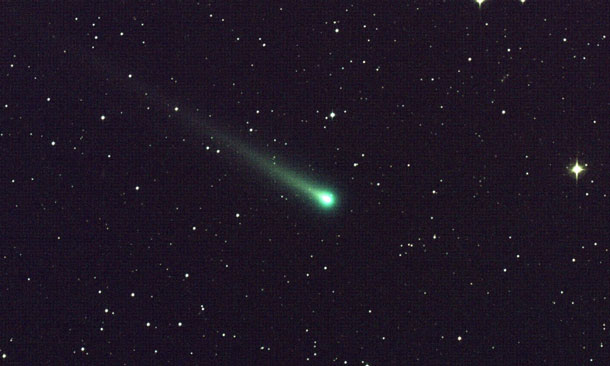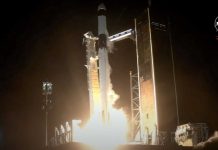
Comet Ison Visible to Naked Eye
THUNDER BAY – Comet ISON is racing through our solar system. The Internet is alive with news on this Comet, and its continued journey to the sun.
NASA states, “A comet’s journey through the solar system is perilous and violent. A giant ejection of solar material from the sun could rip its tail off. Before it reaches Mars — at some 230 million miles away from the sun — the radiation of the sun begins to boil its water, the first step toward breaking apart. And, if it survives all this, the intense radiation and pressure as it flies near the surface of the sun could destroy it altogether.”
[sws_pullquote_right]Right now until Saturday, ISON will be at its brightest. [/sws_pullquote_right] Right now, Comet ISON is making that journey. It began its trip from the Oort cloud region of our solar system and is now travelling toward the sun.
The comet will reach its closest approach to the sun on Thanksgiving Day — Nov. 28, 2013 — skimming just 730,000 miles above the sun’s surface. If it comes around the sun without breaking up, the comet will be visible in the Northern Hemisphere with the naked eye, and from what we see now, ISON is predicted to be a particularly bright and beautiful comet.
Comet Ison from Hubble Space Telescope
Quiet Coverage Fires Up Conspiracies
Comets have always generated fear, speculation and concern on Earth. From the earliest days people have thought comets forecast doom
Today, there are conspiracy theories, along with UFO ghost tales. With Comet ISON there are also doomsday theories, with some forecasting that the Mayan Calendar was simply off by a year.
One of the conspiracy theories is that ‘Dust from ISON will fly at the sun, activating massive solar storm activity which would in effect destroy Earth’s electric grid’.
Mysticism has surrounded science on Comet. So has lunacy. Remember the Hale-Bopp comet that had a group of religious fanatics kill themselves thinking the comet would take them to space?
On March 26, 1997, police discovered the bodies of 39 members of the group who had committed mass suicide in order to reach what they believed was an alien space craft following the Comet Hale–Bopp, which was then at its brightest in the night sky.
The comet ISON can be viewed in a clear night sky with binoculars. Getting out into the country will likely enhance your viewing experience.
In-depth Comet ISON Information
Comet C/2012 S1 (ISON) will pass the Sun at just 0.012AU (~1.1-million kilometers above the solar surface), classifying it as a Sungrazing Comet, and potentially a spectacular one! Comet ISON is still far away, and as both a dynamically new object and a sungrazing comet, it is difficult to predict exactly how bright the comet will become in November.
However, there does exist the potential for this to be one of the brighter comets of the past century. And even if it does not live up to that lofty goal, it will nonetheless be a relatively large sungrazing comet, fresh from the Oort Cloud, getting its first ever experience with the Sun’s immense gravitational pull and intense radiation.
Regardless of ISON’s brightness, these facts alone make it an extremely attractive target to astronomers, and one that is potentially rich with new science. To that end, NASA has requested a small committee of cometary experts to be formed and coordinate an observing campaign for this comet, under the assumption that it will enter the inner solar system during the middle of 2013 as at least a reasonably bright comet, and provide us with an unprecedented opportunity to witness the vaporizing of pristine solar system material as it nears perihelion.







